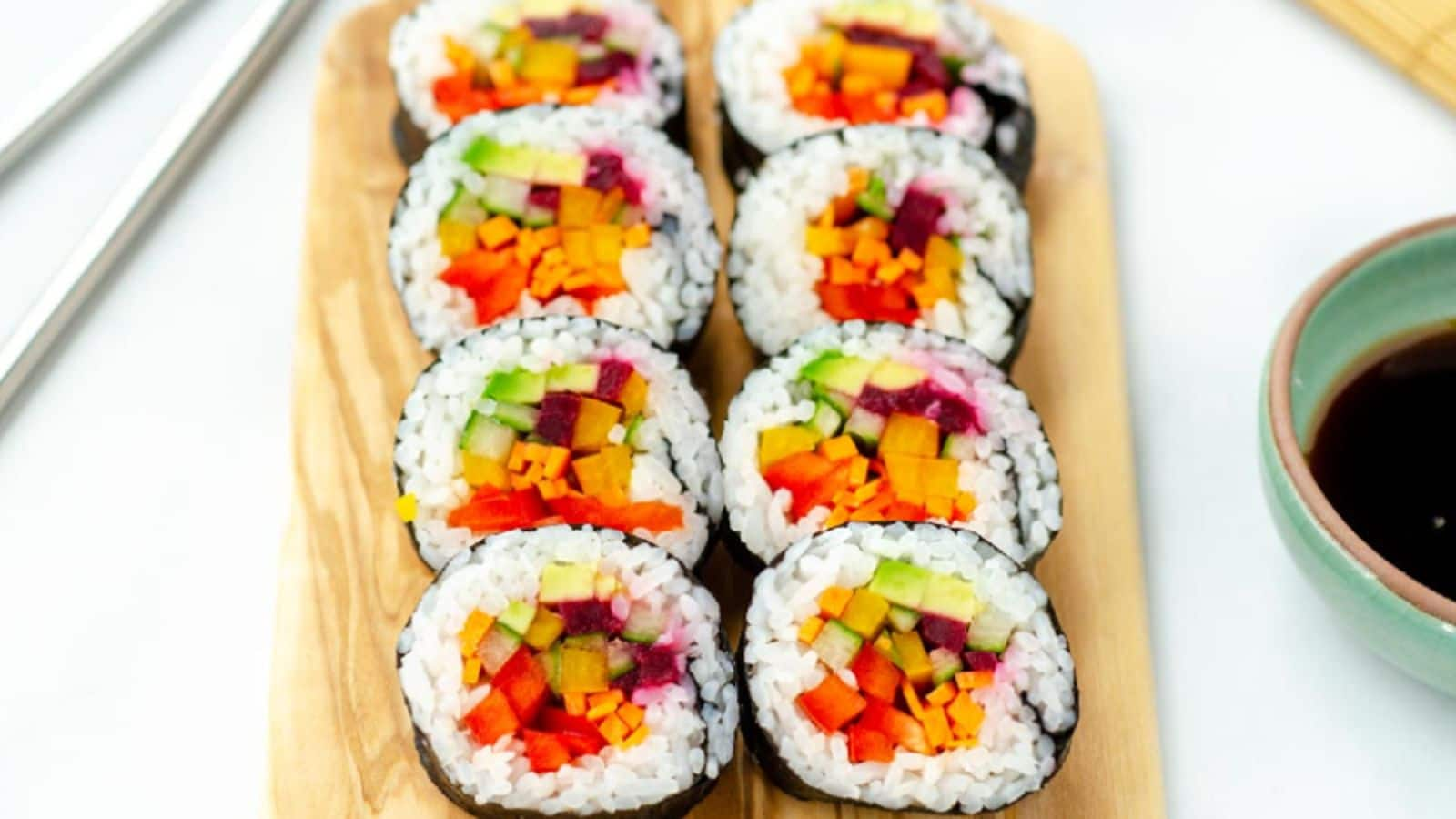
Prepare this rainbow veggie sushi: A step-by-step recipe
What's the story
Sushi, with its origins in Japanese culture, has evolved from a method of fish preservation to a distinguished culinary art. While traditional sushi primarily includes seafood, rainbow veggie sushi offers a vibrant, inclusive option for vegetarians and those seeking a colorful dish. Its eye-catching presentation and fresh, eggless flavors make it as visually appealing as it is delicious. Let's begin the preparation process.
Ingredients list
Gather the following ingredients
To make your rainbow veggie sushi at home, you'll need two cups of sushi rice, three tablespoons of rice vinegar, two tablespoons of sugar, one teaspoon of salt, nori sheets (seaweed), and a variety of vegetables such as bell peppers (red, yellow, green), cucumber, avocado, and carrot. For garnishing and dipping, arrage for soy sauce, pickled ginger, and wasabi paste.
Step 1
Preparing the sushi rice
Begin by rinsing two cups of sushi rice until the water is clear. Cook according to package instructions or in a rice cooker. Transfer the cooked rice to a large bowl. While warm, fold in three tablespoons of rice vinegar, two tablespoons of sugar, and one teaspoon of salt. Let it cool to room temperature before using it for sushi.
Step 2
Cutting vegetables for filling
While your rice cools down, prepare your vegetables by cutting them into long thin strips or julienne slices for easy rolling later on. Bell peppers should be deseeded and sliced thinly, cucumber can be cut into matchsticks without peeling, carrots might need blanching if too hard, and avocado should be peeled and cut into slices lastly to prevent browning.
Step 3
Assembling your sushi rolls
Place a nori sheet shiny-side down on a bamboo mat or parchment paper if you don't have one. Spread an even layer of cooled sushi rice onto three-quarters of the nori sheet, leaving about an inch empty at the top end for sealing later on. Arrange your prepped veggies horizontally across the center over the layer of rice.
Step 4
Rolling your rainbow veggie sushi
Begin by rolling your sushi tightly from the bottom end towards the top, using a bamboo mat or parchment paper for guidance. Apply gentle pressure throughout to ensure the roll is compact without squashing the contents. To seal the roll, slightly wet the empty strip at the top before fully wrapping it around itself. This method helps in maintaining the roll's shape and integrity.